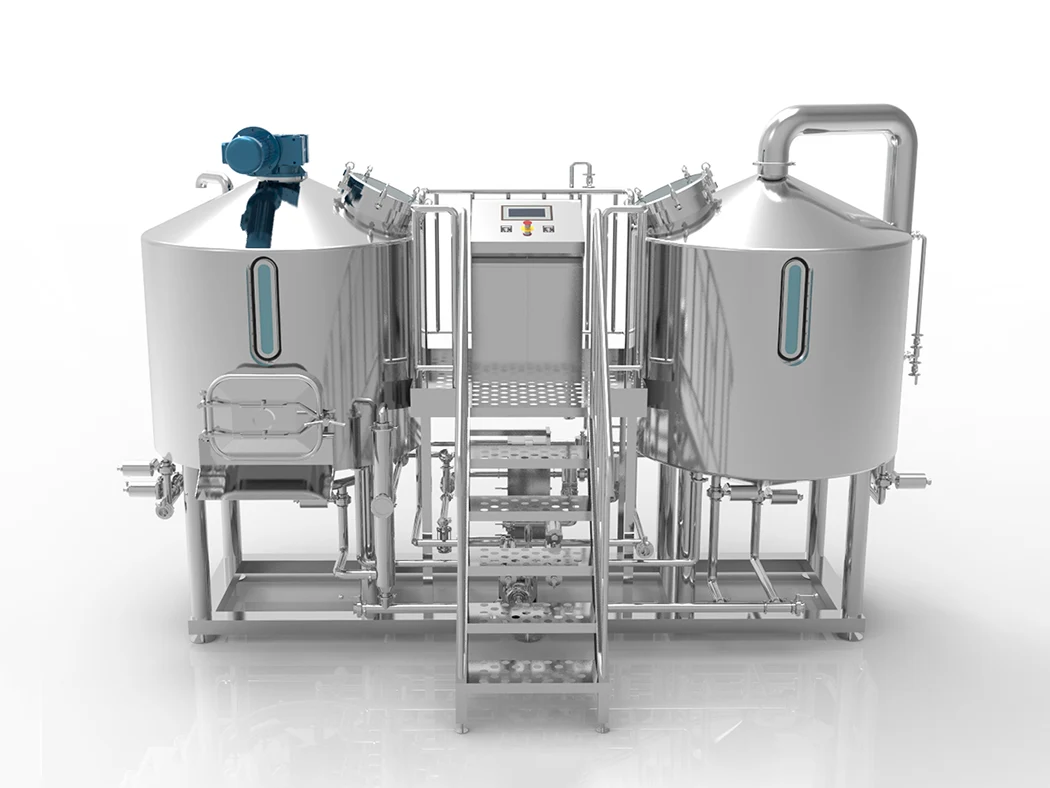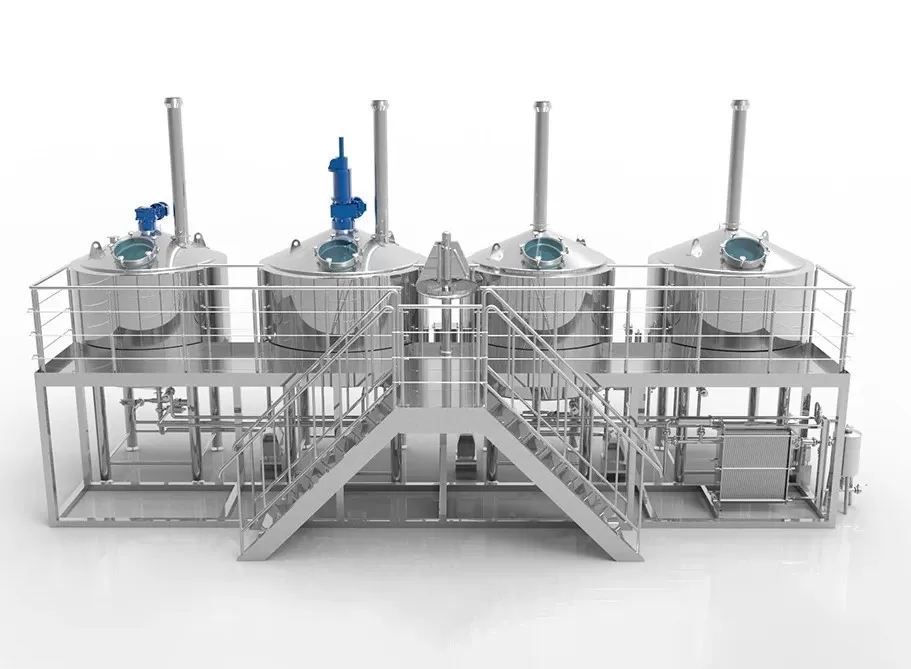If you’re considering starting a beer brewing business, selecting the appropriate brewery equipment is crucial. The worst scenario is ending up with brewing equipment that is inefficient and complicates the brewing process unnecessarily. In this article, we will explore some of the most in-demand brewing equipment available and how it can enhance your beer-making journey.
Fase 1: scegliere in anticipo il miglior fornitore di attrezzature per la produzione di birra
Investing in high-quality brewing equipment is crucial to ensure that your beer tastes better. Before purchasing brewery equipment, it’s important to research and find the best value for your money. It’s essential to choose equipment that not only enhances the quality of your beer but also improves its taste.
I sistemi di birrificazione sono di varie forme e dimensioni e il processo di progettazione e costruzione può richiedere tempi diversi. Pertanto, è necessario inserire l'acquisto di attrezzature per la birra nella pianificazione della produzione almeno sei mesi prima dell'apertura del birrificio.
When selecting a brewing equipment supplier, it’s essential to find one who can make brewing systems according to your specific needs and requirements. Quality and user experience are also vital factors to consider since you will be using the equipment for years to come.
Choosing the most suitable brewing equipment manufacturer can be a tedious process due to the variety of styles, configurations, and brewing techniques. Hence, it’s advisable to compare several brewery equipment suppliers before making a decision. Remember, buying the equipment is just the beginning, and labor-intensive manufacturing techniques require proficient knowledge and expertise from the manufacturer.
Fase 2: scegliere l'attrezzatura per la produzione di birra della giusta dimensione
One of the first questions you’ll encounter when speaking with a brewing equipment supplier for the first time is which brewing system to choose. In this article, we’ll list the differences and setup costs for three types of breweries to help you make an informed decision.
To select the right brewing system, it’s essential to have a clear understanding of your brewery size and production goals. While established businesses may be aware of these factors, new businesses often overlook their importance when purchasing the brewing system that will meet their current and future needs.
Calculating a brewery’s annual production involves using the following formula: (brewhouse size) x (number of brews per week) x (50 weeks per year) = annual production. Understanding your production needs will help determine the appropriate brewing equipment size for your business.
Ad esempio, un piccolo sistema di birreria Nano può essere sufficiente se si prevede di produrre una quantità limitata di birra.
In un piccolo sistema di birrificazione Nano
- Un sistema da 5 BBL x 2 birre a settimana x 50 settimane = 500 BBL all'anno
- Un impianto da 5 BBL x 3 birre a settimana x 50 settimane = 750 BBL all'anno
In un sistema di micro birrificio medio
- Un sistema da 10 BBL x 3 birre a settimana x 50 settimane = 1500 BBL all'anno
- Un impianto da 10 BBL x 6 birre a settimana x 50 settimane = 3000 BBL all'anno
In un sistema di birrificazione commerciale di grandi dimensioni
- Un impianto da 30 BBL x 10 birre a settimana x 50 settimane = 15000 BBL all'anno
- Un impianto da 30 BBL x 15 birre a settimana x 50 settimane = 22500 BBL all'anno
Once you’ve determined your target production volume, you can assess the brewery’s design maximum production efficiency based on that volume.
Ad esempio, i birrifici nano o i sistemi per brewpub hanno in genere una capacità compresa tra 2 e 5 BBL e producono 200-750 barili all'anno. I sistemi per birrifici artigianali, invece, hanno solitamente una capacità di 10-15 BBL e producono 1.500-4.500 barili all'anno. Per una scala di produzione commerciale, un sistema di produzione completo dovrebbe essere di 20 BBL o più e avere una capacità di produrre oltre 10.000 barili all'anno.
It’s crucial to keep in mind that different brewing systems represent various stages of a brewery’s development. Therefore, when designing a brewing system, it’s essential to ensure that the purchased system meets the brewery’s development needs for at least the next 5-10 years. A reputable supplier should provide you with various suggestions and configurations that fit within your budget.
SOLUZIONE PER BIRRERIA
Il principale mercato per le attrezzature per birrifici
Fase 3. Investire nel birrificio per ottenere il massimo ROI
Every investment is personal, and the same holds true for the beer brewing industry. Therefore, it’s essential to select the appropriate equipment supplier and the right brewing equipment. The cost of brewing equipment is a significant factor in our ROI calculation. So, how much should we invest in brewing equipment?
Diversi fattori influenzano il prezzo delle attrezzature per la produzione di birra, come ad esempio:
- Scelta di più fornitori di apparecchiature per il confronto (vedi Fase 1)
- Selezione delle dimensioni dell'apparecchiatura in base agli obiettivi di produzione (vedere la fase 2).
- Disponibilità di un'assistenza tecnica sufficiente da parte del produttore
- Qualità dei materiali utilizzati nel processo di produzione
- Prezzo di acquisto dell'apparecchiatura entro il budget
- Consegna e installazione dell'intero sistema
- Assistenza post-vendita
Vi sembra complicato? Qualsiasi investimento di successo richiede una comunicazione e calcoli complessi. Noi prendiamo in considerazione tutti gli aspetti sopra citati per garantirvi un ROI elevato. Contattateci qui per ottenere tutte le informazioni necessarie.
Take your time to compare these costs against your planned business objectives. Micet Group’s brewing equipment can assist you in making the right choice. The least expensive equipment is not always the best investment. We need to consider the supplier’s design capability, service level, material quality, manufacturing process, delivery, technical after-sales support, total lifespan, overall capacity, and how much profit this capacity will generate when everything works at maximum productivity. These factors should provide you with a better understanding of what you can afford.




